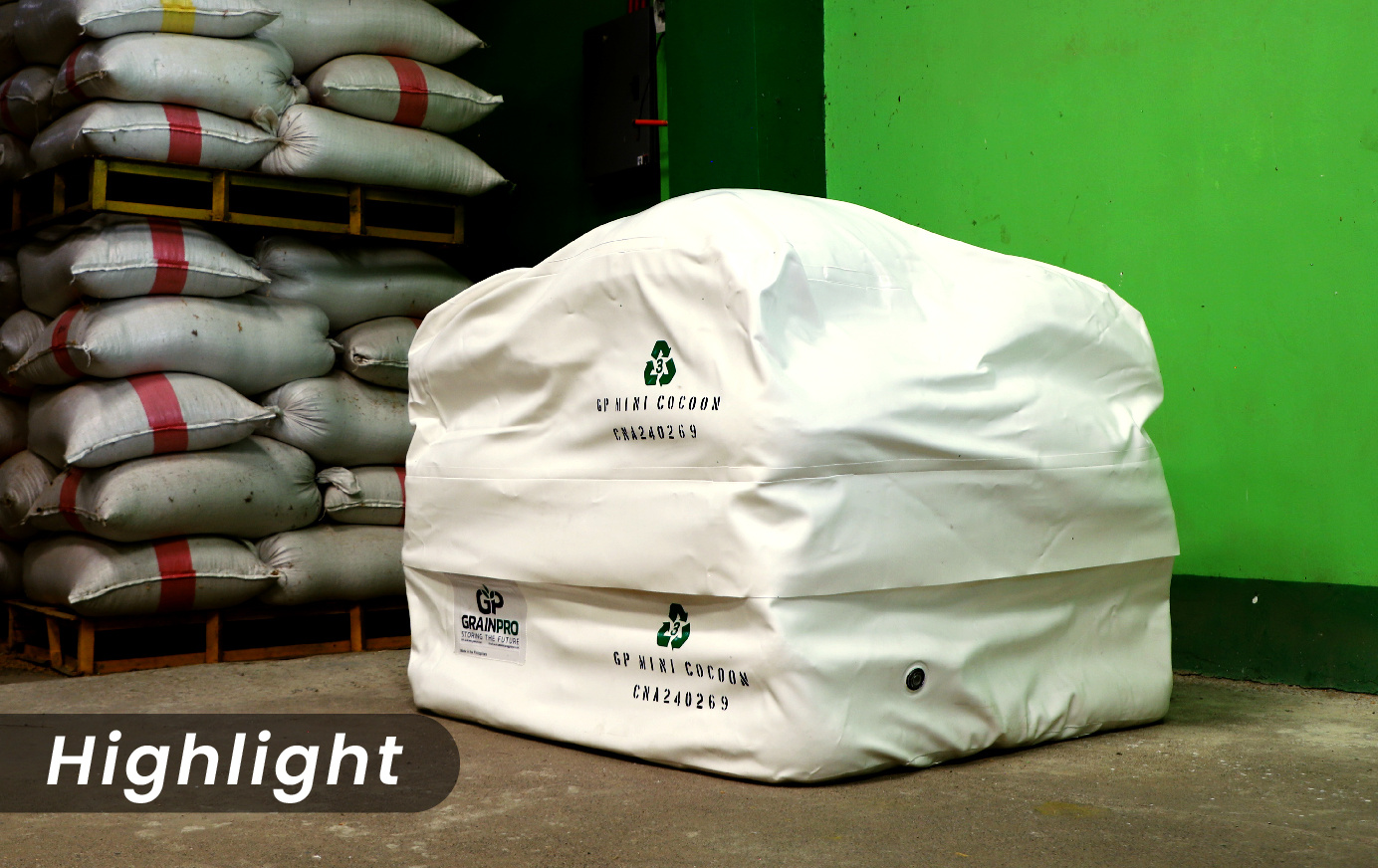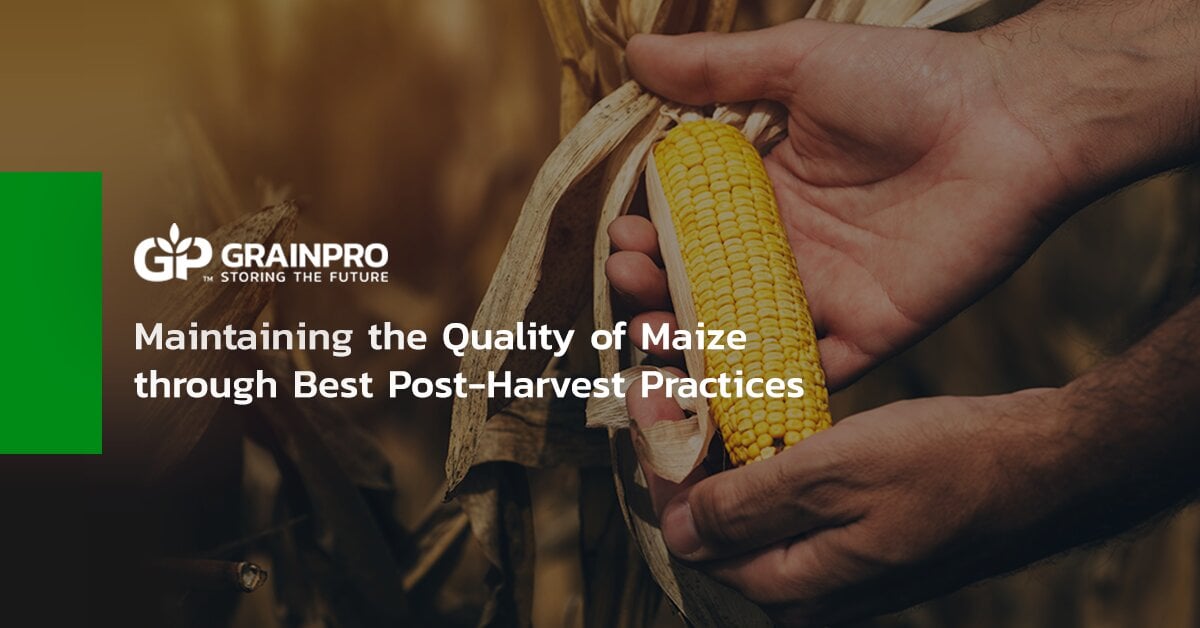Drying maize properly
To start off, maize should be dried immediately after harvest in order to avoid creating a conducive environment for pest breeding.
When drying maize, take note that it is best not to perform the process directly on the ground to prevent soil and dirt contamination which could result to fungal or mold growth. That said, farmers and handlers are advised to use appropriate drying facilities which can protect the commodities from contaminants and unpredictable weather.
Aside from using special drying facilities, farmers and handlers must pay attention to the moisture content of maize. After harvest, maize typically has a high moisture content and therefore should be reduced to 13 to 14% to prevent mold growth and consequently, damage or post-harvest food waste.
Read more about it: Preventing Lesser Grain Borers in Stored Grains
Using Effective Storage Systems
When it comes to storing maize, meanwhile, there are two factors that need careful attention—biotic and non-biotic. Biotic factors include all living agents that use the crop as a source of nutrients and so leading to its damage. Examples of the biotic factors are insects, pests, and microorganisms. The non-biotic factors, on the other hand, involve relative humidity, temperature, and time.
While these may sound simple, these factors can bring about huge problems if not addressed properly. For instance, microorganisms and changes in moisture and humidity can trigger mold growth and eventually, aflatoxins. These are harmful substances produced by certain fungi. They are prevalent and recognized as a major health threat especially in hot and humid countries. The presence of aflatoxins makes maize unsafe for consumption as it can depress the immune system and cause birth defects or stunted growth among children. It can also cause death of livestock who feed heavily on maize.
Read more about it: Reducing Health Risks by Preventing Mold Growth
Having said these harmful effects, it is critical that farmers and handlers protect their precious crops during post-harvest. To make this possible, it is recommended to use a storage system that is sure to guard the maize against both biotic and non-biotic elements.
There are multiple options to choose from for storage systems. However, a research posted by the National Center for Biotechnology Information suggests that airtight containers are the most effective in guarding maize from mold, insects, and other threats to its quality as both mold and insects need oxygen and high humidity to thrive. Hence, the environment in an airtight storage significantly decreases their ability to survive.
To summarize, the best post-harvest practices for maize include drying properly and safely using drying facilities, monitoring moisture content carefully, and ensuring that the storage in place will protect the maize from mold growth, pests, and moisture.
GrainPro specializes in using hermetic technology in drying, storing, and transporting commodities such as maize. These solutions are proven to help improve post-harvest handling and management of commodities by protecting them against insect infestation, mold growth, inclement weather and more.
Date Published: February 25, 2019




